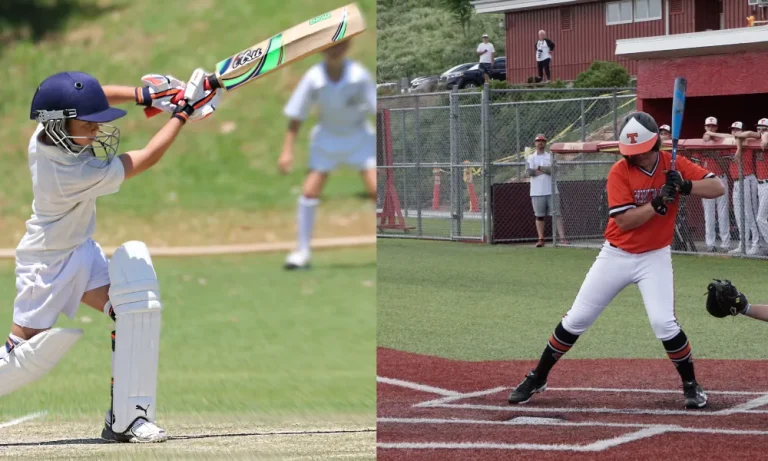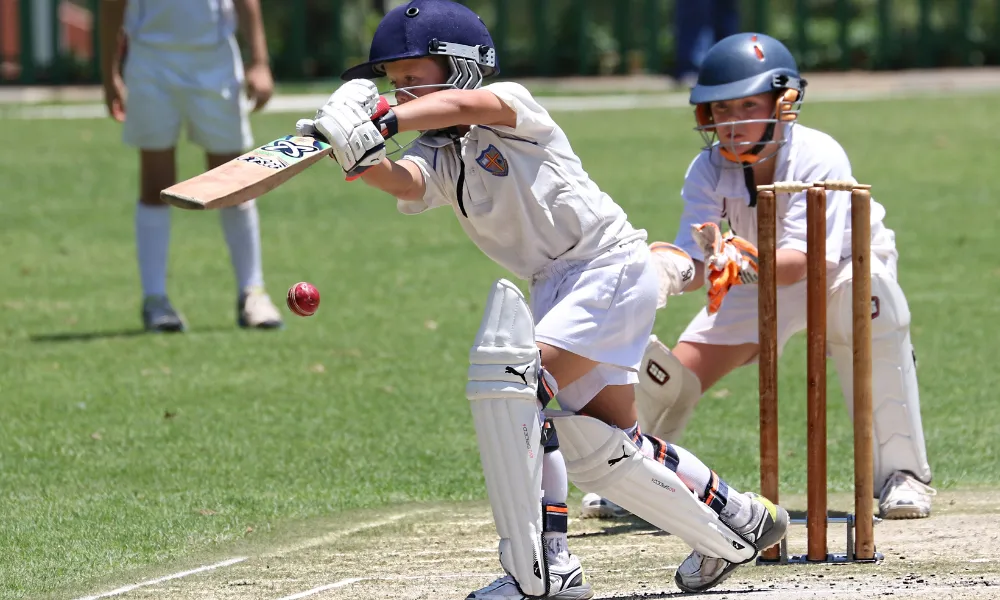How Long Is a Cricket Match? Explained in Detail
Cricket, a sport loved by millions across the globe, has always captivated people with its unique blend of skill, strategy, and excitement. As fans eagerly gather to watch cricket matches, one question often arises: How long is a cricket match? In this article, we will explore the duration of cricket matches in different formats and shed light on the factors that influence their length. So, if you’ve ever wondered about the time it takes for a cricket match to unfold, keep reading to satisfy your curiosity.
How Long Is a Cricket Match? What is a Cricket Match?
A cricket match refers to a game played between two teams, each consisting of eleven players. It is a bat-and-ball sport that originated in England and has gained immense popularity worldwide. Cricket matches are known for their unique structure and various formats, including Test matches, One-Day Internationals (ODIs), and Twenty20 (T20) matches.
In a Test match, considered the pinnacle of cricket, each team gets two innings to bat and bowl. The length of a Test match can vary, lasting up to five days. Yes, you heard it right, five whole days! This extended duration allows for comprehensive gameplay and tests the skills, stamina, and mental strength of players.
On the other hand, ODIs are limited-overs matches where each team gets a fixed number of overs to bat and bowl. Typically, an ODI match lasts around 7 to 8 hours, which includes both innings. The shorter duration of ODIs makes them more fast-paced, thrilling, and accessible to fans with limited time.
T20 matches, as the name suggests, are the shortest format of cricket. In a T20 match, each team gets only 20 overs to showcase their skills. These matches are action-packed, with a higher emphasis on aggressive batting and quick decision-making. A typical T20 match lasts around 3 to 4 hours, making it a perfect choice for those seeking instant cricket gratification.
How Long Is a Cricket Match? Understanding Test Matches
Test matches are the longest format of cricket, known for their enduring battles and strategic gameplay. In a Test match, each team gets two innings to showcase their batting and bowling skills. The duration of a Test match can vary, spanning over five days of intense competition.
The length of a Test match allows for a comprehensive examination of a team’s abilities and resilience. It gives players ample time to recover from setbacks, devise strategies, and showcase their technical prowess. The extended duration also adds a layer of psychological challenges, as players must maintain focus and concentration over several days.
The duration of a Test match can be influenced by various factors. The state of the pitch, weather conditions, and the pace of play can all impact the length of the game. Additionally, unexpected rain delays or bad light can further extend the duration, making Test matches a true test of patience and adaptability for both players and fans.
How Long Is a Cricket Match? Duration of Test Matches
The duration of a Test match can range from a minimum of three days to a maximum of five days. Typically, Test matches are played over five days, with each day consisting of three sessions of play. The first two sessions are played during the day, while the final session is played under floodlights.
A Test match is divided into innings, with each team having the opportunity to bat and bowl twice. The duration of each innings can vary depending on several factors, such as the batting team’s run rate, the bowling team’s effectiveness, and the number of wickets taken. It is not uncommon for an innings to last an entire day or more.
The longer duration of Test matches allows for more strategic gameplay and tactical battles between teams. It gives players the opportunity to showcase their skills over an extended period, testing their endurance and mental fortitude. The unique challenges and time invested in Test matches make them highly regarded among players and enthusiasts of the sport.
How Long Is a Cricket Match? One-Day Internationals (ODIs)
One-Day Internationals (ODIs) are a popular format of cricket that offers fast-paced action and limited-overs gameplay. Unlike Test matches, ODIs have a fixed number of overs for each team to bat and bowl, resulting in a more time-efficient format.
An ODI match typically lasts around 7 to 8 hours, including both innings. Each team gets a specific number of overs, usually 50, to showcase their batting skills. The limited number of overs adds urgency to the gameplay, as teams aim to score as many runs as possible within the allocated time.
The duration of an ODI match can be influenced by several factors. The run rate, number of wickets, and game situation can all impact the pace of play. Rain interruptions or other unforeseen circumstances may also affect the length of the match, either by reducing the number of overs or causing delays.
How Long Is a Cricket Match? Twenty20 (T20) Matches
Twenty20 (T20) matches are the shortest format of cricket, known for their high-energy and thrilling gameplay. In T20 matches, each team gets only 20 overs to showcase their batting and bowling skills, making it a fast-paced and action-packed format.
A typical T20 match lasts around 3 to 4 hours, making it a perfect choice for those seeking instant cricket gratification. The limited number of overs results in aggressive batting, quick decision-making, and intense battles between the teams. T20 matches often attract a large number of spectators due to their shorter duration and entertainment value.
The duration of a T20 match can be influenced by various factors, including the pace of play, run rate, and the number of wickets taken. Rain interruptions or other unforeseen circumstances may also impact the length of the match. Despite its shorter duration, T20 cricket offers an exciting and dynamic experience for both players and fans.
How Long Is a Cricket Match? Factors Affecting Match Duration
Several factors can influence the duration of a cricket match, regardless of the format being played. These factors include the state of the pitch, weather conditions, the pace of play, and unforeseen interruptions such as rain or bad light.
The state of the pitch can have a significant impact on the match’s duration. A pitch that offers more assistance to the bowlers may result in quicker dismissals, potentially shortening the match. On the other hand, a flat pitch that favors batting may result in longer innings and a higher run rate, extending the duration of the match.
Weather conditions, especially rain, can cause delays and interruptions in a cricket match. Rain delays can lead to a reduction in overs or even the match being abandoned altogether. The unpredictability of weather conditions adds an element of uncertainty to the match duration, as players and officials must adapt to the changing circumstances.
The pace of play is another factor that affects match duration. Some matches may witness a slow run rate, with batsmen taking their time to accumulate runs, while others may see aggressive batting resulting in quick scoring. The effectiveness of the bowling team also plays a role, as a team that takes wickets quickly can shorten the duration of an innings.
FAQs
1: How long does a Test match last?
Test matches can last from three to five days, with each day consisting of three sessions of play.
2: What is the typical duration of an ODI match?
An ODI match usually lasts around 7 to 8 hours, including both innings.
3: How long does a T20 match usually take?
T20 matches typically last around 3 to 4 hours, making it the shortest format of cricket.
4: What factors can affect the duration of a cricket match?
Factors such as the state of the pitch, weather conditions, the pace of play, and interruptions like rain or bad light can influence match duration.
5: Can the duration of a cricket match be extended due to rain delays?
Yes, rain delays can lead to a reduction in overs or even abandonment of the match, extending the overall duration.
Conclusion
The duration of a cricket match varies depending on the format being played. Test matches, known for their longer duration, can span over several days, while One-Day Internationals (ODIs) and Twenty20 (T20) matches are completed within a shorter timeframe.
The diversity in match durations adds to the charm of cricket, catering to different preferences and providing a range of experiences for fans worldwide. Regardless of the format, cricket matches continue to captivate audiences with their enduring appeal and the thrill they bring to players and spectators alike.


